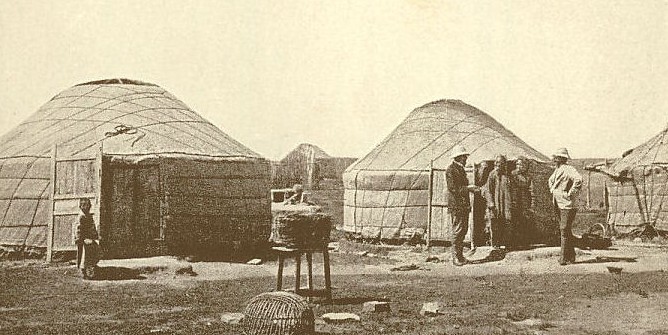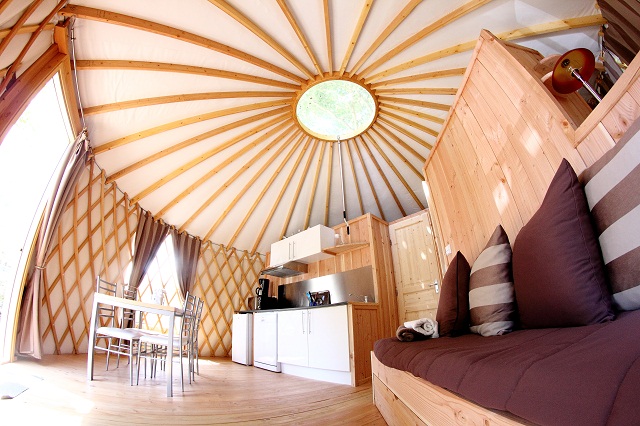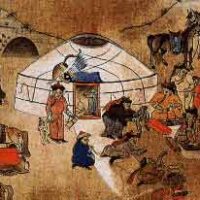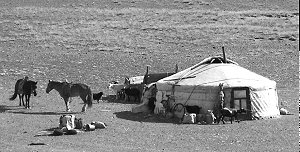The yurt of the Mongolian nomads

The yurt (Turkish: Yurt = home) is the traditional tent of nomads in Western and Central Asia.
The yurt serves the Mongolian nomads as mobile accommodation and therefore stands for a culture of mobility. At the same time it is an expression of the compulsion to adapt to natural cycles. Due to the necessary mobility, your tents must be easy to set up and take down and are optimally adapted to the climatic conditions. A yurt can also pack relatively small, so that previously only two camels, yaks or a few horses were needed to transport a yurt.
The nomadic self-image is based here on the model of Genghis Khan, the famous leader of a huge equestrian army in 12.-13. Century. In the 20 years 98% of the Mongols lived in a yurt. After that, the People's Republic offered alternatives by building industry, jobs, and settlements. In the middle of the 80s only 35 percent of the Mongols lived nomadic. Democracy and the market economy were introduced at the beginning of the 90s. Gentle tourism also offers nomads new sources of income. Since then, many Mongols find their way back to mobile life, and scientists even talk about re-nomadization.
The wooden frame of a Mongolian yurt has hardly changed to this day and usually consists of scissor bars for the wall, a crown in the middle that is supported by two supports and the rafters that connect the grid and the crown. The original yurt was insulated with several layers of felt and then covered with various cloths. The door was often painted with intricate colored patterns, as were the columns, crown and bars.
The yurt reflects in its institution the social and spiritual order, the people living in it. Each member of the family is assigned his or her place and area of activity in the yurt. Room layout and equipment are highly optimized to allow cooking, working, living and sleeping in the limited space and the sometimes extreme climatic conditions.
Even today, yurts are of great importance in Mongolia. Not only the nomads, but also parts of the urban population live part of the year in the yurt, which in winter are sometimes even warmer than the built-up houses.

Image source: Camping Sunêlia L'Atlantique
The shape of the traditional yurt is being reinterpreted by many yurt builders in America and Europe. There are now a large number of modern yurts that have been adapted to today's comfort with a kitchen and bathroom. These yurts no longer have much to do with nomadic culture, but are proof of how versatile this ingenious tent construction architecture can be.


